How to Build Patient Engagement Technology that Will Truly Engage Patients
The digital patient engagement market is growing rapidly, and its potential is even greater. However, this does not mean that any generic solution will succeed. Based on our experience in healthcare software development, we have prepared a guide on how to build a successful patient engagement solution.

First, be empathic
Don't scroll down, because you feel it's obvious. Is it, though? Do you treat your current or future app users merely as clients? This mindset might be suitable for retail, fintech, or other sectors, but not in digital health. HealthTech businesses must be strongly founded on a mission; otherwise, they probably won't survive. Your users aren't just users. They are real people with real-life struggles, often forced to manage chronic diseases all their lives. If you don’t try to understand your users’ experience, you won’t build a product that will be appealing to them.
face scalability challenges upfront
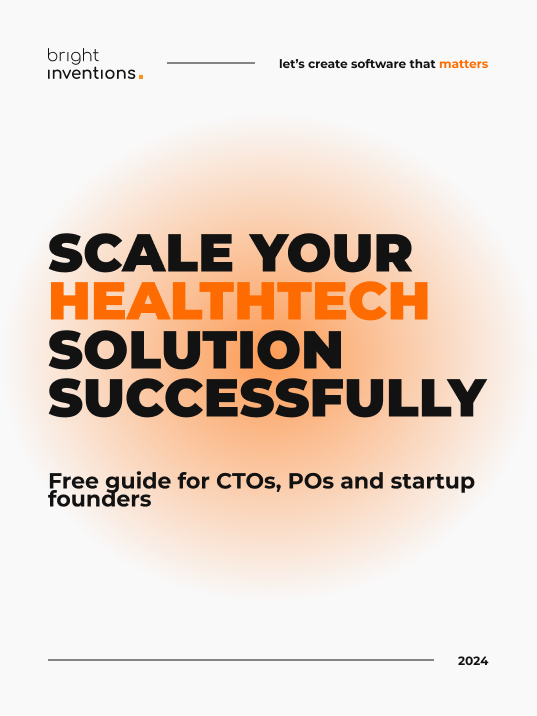
Start from workshops to scrutinize your idea and target groups
You might have an idea for an eHealth solution, but that's not even the first step to succeeding in healthcare software development. You should attend product discovery workshops that will help you understand your potential customers.
Learn more about product discovery workshops.
Validate your idea and business approach with an MVP
A Minimum Viable Product (MVP) is the most efficient way to validate your idea. In a cost-effective and timely manner, you can launch the first version of your product with key features to receive vital feedback from end-users.
Before the launch, you should set up analytics metrics to measure your goals. Check out our MVP success metrics cheat sheet:
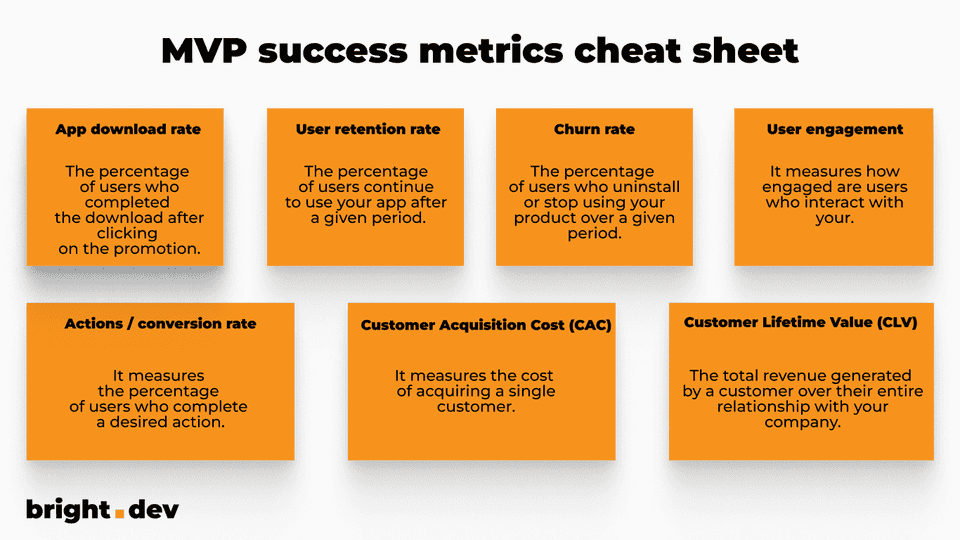
If you want to delve into MVP development, we’ve got lots of other resources for you!
build MVP that will help you grow
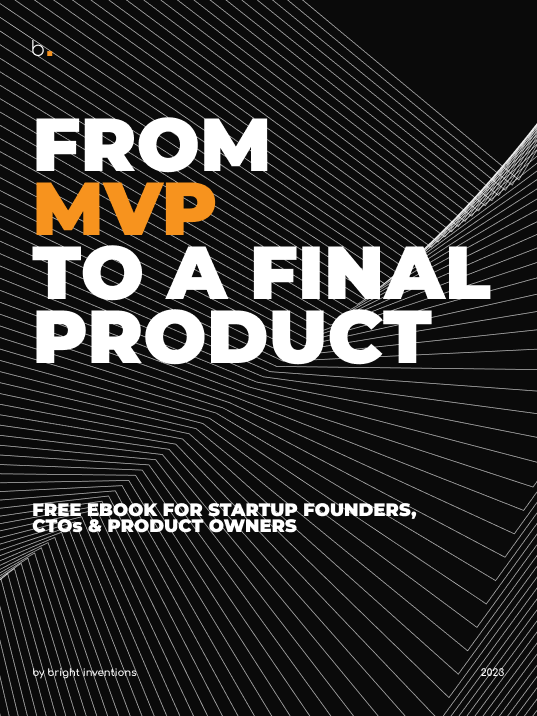
Create simple design
UX design is a crucial factor in ensuring a successful user experience for your solution. Depending on your end users, you might need to design for older people less familiar with technology, who might be skeptical about your solution. The design must immediately demonstrate value, enable smooth navigation, and manage the handling of vast amounts of information, which is often the case for eHealth apps.
If you want to delve into product design, read more about designing healthcare solutions.
Evaluate your app onboarding
Most software solution faces a crucial challenge: designing the onboarding process to increase the number of registered and (already) engaged users. Our experience, especially in healthcare software development, suggests creating a longer onboarding process to demonstrate your commitment to users and tailor the app to their personal experiences.
Examine the story of the FemTech pregnant women engagement app whose shortened onboarding process led to a decrease in the number of completions.
Implement gamification features
Healthcare is not a joke, yet in many cases, you can turn health management into fun. Here are several examples of gamification features used in patient engagement platforms:
- Points System: Patients earn points for completing health-related tasks, such as taking medication on time, logging daily activities, or completing a series of exercises. These points can track progress or be used to unlock rewards.
- Badges and Achievements: Similar to points, badges are awarded for milestones or achievements, such as reaching a step goal, completing all daily tasks, or maintaining a streak of medication adherence. These badges serve as visual symbols of accomplishment.
- Progress Tracking and Visualization: By visualizing progress through charts, graphs, or virtual journeys, users can see how far they've come and what goals they're approaching. This visual progress can be incredibly motivating.
- Challenges and Quests: Setting up specific challenges or quests for users to complete can make the process of achieving health goals more engaging. Challenges could range from walking a certain number of steps in a day to completing a week's worth of healthy eating.
- Personalized Goals and Adaptation: Some apps adapt to the user's behavior and performance, setting increasingly challenging but achievable goals based on their progress. This personalized approach keeps users engaged without overwhelming them.
- Reward Systems: Incentives like discounts, gift cards, or tangible rewards for reaching health milestones or maintaining consistent use of the app. These rewards can significantly enhance user engagement and commitment to health goals.
Use technologies that will support your growth
The stack and technologies you choose, even at the MVP phase, might influence your product development for years to come. Here are examples of things to consider by CTO, Product Owner, or startup founder:
- Choosing between building mobile native applications or hybrid: Delve into this choice in our other blog post regarding native apps vs cross-platform.
- Implementing performance monitoring: This type of monitoring becomes especially crucial during the scaling phase, where you want to monitor capacity, any feature blockages, etc. Only then can you foresee issues before they affect your users!
- Leveraging cloud computing for scalability: Cloud computing offers cost-effective scaling of your product. Using providers like AWS also aids in adhering to HIPAA or GDPR, which is crucial for many healthcare solutions.
Build credibility with the right software
Trust is crucial in eHealth solutions, especially when we consider engagement software that can assist chronically ill patients throughout their lives. Therefore, when choosing an app that might be a crucial tool every day, they need to feel the product is credible. By implementing performance monitoring, as mentioned earlier, you can avoid large performance issues, thereby sparing users any frustrations. Yet, there are other technical steps to take to build credibility:
- Adhering to laws: while storing medical data, you must follow top security standards to comply with HIPAA, GDPR, or other regional laws. Security standards aren't supposed to be followed just to comply with the law, but foremost to take care of users' data. Any data breach could be disastrous for your credibility, so always prioritize security.
explore top security practices and tool
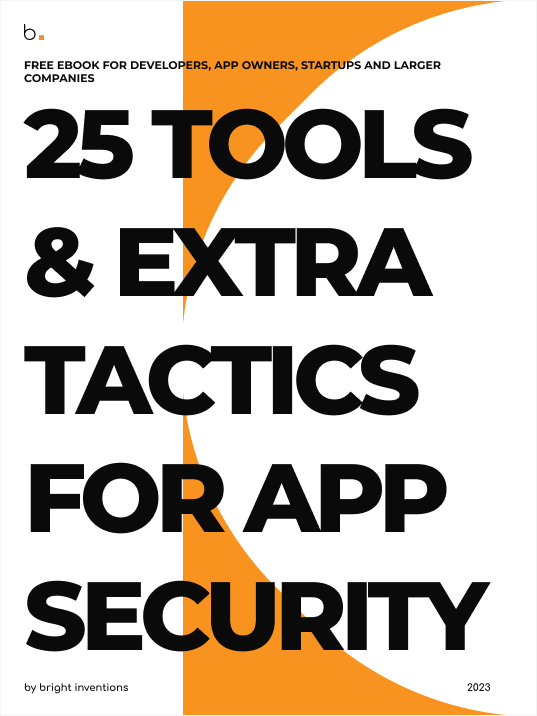
- Code modernization: don't let technological debt slow your growth. Especially during the scalability phase, dedicate some sprints to code modernization, updating libraries, and other activities that will improve your code and enhance security.
- Quality assurance: There comes a time when a balanced number of manual and automated tests must support product development. This approach will reduce the number of issues in your product, leading to fewer instances of user dissatisfaction.
Verify the best engagement channels
Study shows that in-app messaging boasts a remarkable 75% open rate, significantly surpassing other communication methods and nearly tripling the effectiveness of push notifications. While in-app messaging is highly effective at engaging active users within the app, enhancing their experience and encouraging specific actions, it's crucial not to overlook the importance of push notifications and traditional emails. Push notifications and emails are especially valuable for re-engaging users, drawing them back into the app, and maintaining their engagement over time.
Initially, explore all potential engagement channels, then use data-driven analysis to identify the most effective ones. Following this, you can optimize the frequency of notifications, emails, etc., based on insights from this data. All these activities should be supported by rigorous A/B testing – for example, sending variations of notification text or different email subject lines to distinct groups to analyze open rates.
Example of patient engagement solution
Read the story about crafting a personal digital diary for patients suffering from Parkinson’s disease. The app lets users record their symptoms and track the intake of prescribed drugs.
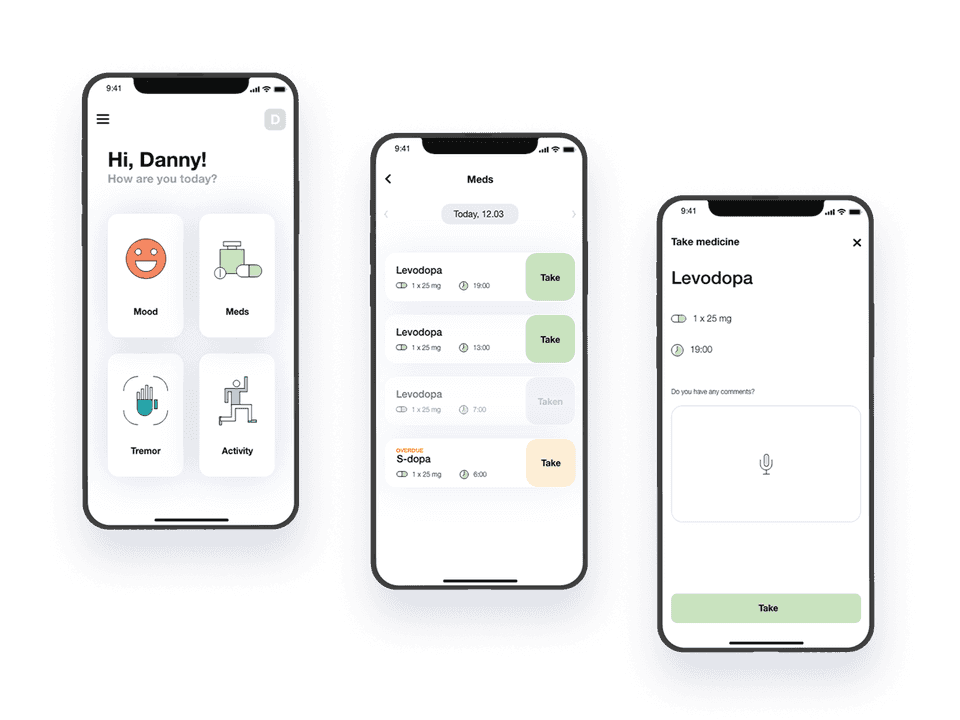
Why is digital engagement important
The technological revolution in healthcare is built on several fundamental pillars, with both medical professionals and patients playing crucial roles. For it to be effective, both groups must actively participate. This is especially vital in the realm of chronic disease management where medics won't achieve anything without patients' engagement. Through technology, patients are empowered to take control of their health. However, they must be willing to embrace the power that technology gives them. Let’s build the technology that will be a patient engagement tool, not a burden!
